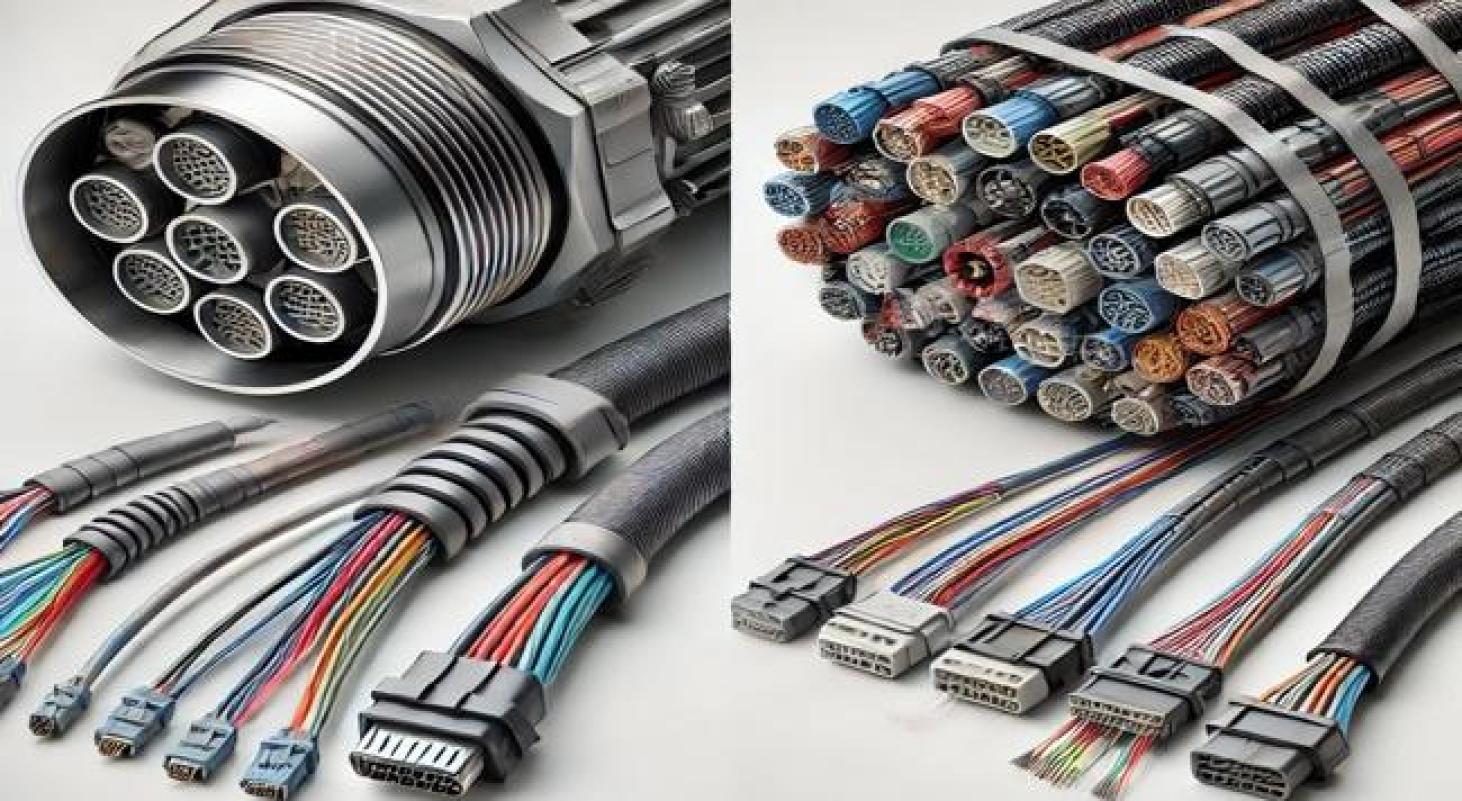Cable Assembly vs. Wire Harness Differences
Understand the key differences between cable assemblies and wire harnesses and how to choose the right solution for your project.

Understanding the Key Differences
When it comes to electrical systems, the terms "cable assembly" and "wire harness" are often used interchangeably. Even seasoned engineers can get caught up in the jargon and mistakenly use one term for the other. However, these components serve different purposes, and understanding their distinctions can help you make an informed choice for your project.
Defining Cable Assemblies and Wire Harnesses
- Cable Assemblies
A cable assembly is a collection of wires or cables, each serving a specific function, bound together into a single unit. These assemblies come sheathed in an external protective layer, offering extra durability against environmental hazards such as moisture, friction, and electromagnetic interference.
- Wire Harnesses
A wire harness, on the other hand, is a collection of wires and cables organized into a single unit without an additional exterior protective covering. Its primary purpose is to organize and route cables efficiently while keeping electrical systems tidy and manageable.
Primary Functions
- Cable Assemblies: Built for Toughness
Cable assemblies are designed to withstand harsh conditions, such as extreme temperatures, moisture, and corrosive environments. This makes them ideal for outdoor applications, industrial settings, and rugged environments where durability is essential.
- Wire Harnesses: Organizational Wizards
Wire harnesses excel in keeping wires and cables neatly arranged within confined spaces, such as inside electronic devices or automotive systems. They offer a cost-effective solution for organizing wiring without adding bulk or rigidity.
Structural Components
- Cable Assemblies: The Anatomy
A typical cable assembly consists of:
-
Connectors
-
Terminals
-
An outer protective sheath (made of materials such as thermoplastic, rubber, or vinyl) that shields against heat, moisture, and mechanical wear
- Wire Harnesses: Simplicity Rules
Wire harnesses generally include:
-
Wires and cables
-
Connectors
-
Minimal or no protective sheathing, making them lightweight and easy to work with in compact spaces
Cost Implications
- Cable Assemblies: Higher Upfront Costs
Due to the additional protective materials and labor-intensive assembly process, cable assemblies tend to be more expensive initially. However, their durability often translates to long-term cost savings.
- Wire Harnesses: Budget-Friendly
Wire harnesses are more affordable upfront but may require more frequent replacements, especially in harsh environments.
Flexibility and Adaptability
- Cable Assemblies: Less Flexible
The external protective covering makes cable assemblies more rigid, which can limit their flexibility and adaptability in tight spaces.
- Wire Harnesses: Highly Adaptable
With no external sheath, wire harnesses are more flexible and can be easily routed through small or intricate spaces.
Customization Options
- Cable Assemblies: Tailor-Made Solutions
Cable assemblies offer various customization options, including:
-
Different connector types
-
Various cable lengths
-
Protective sheathing to suit specific environmental conditions
- Wire Harnesses: Limited Customization
Wire harnesses offer fewer customization options, usually restricted to wire type and length.
Applications: Where They Shine
- Cable Assemblies: Heavy-Duty Applications
Cable assemblies are commonly used in industries requiring high durability and environmental resistance, including:
-
Industrial machinery
-
Aerospace and military applications
-
Medical devices
-
Telecommunications infrastructure
- Wire Harnesses: Everyday Use
Wire harnesses are ideal for:
-
Consumer electronics
-
Automotive systems
-
Home appliances
-
Office equipment
Environmental Impact
- Cable Assemblies: Built to Last
Because of their robust construction, cable assemblies tend to have a longer lifespan, reducing the need for frequent replacements and minimizing environmental waste.
- Wire Harnesses: Use Wisely
Wire harnesses may need more frequent replacements in harsh conditions, leading to potential waste over time.
Choosing the Right Solution
Cable assemblies and wire harnesses both play critical roles in electrical systems, but their structural differences, functions, and applications make them suitable for different scenarios. Whether you need a rugged solution for an industrial setting or an efficient way to organize wiring in a compact space, understanding these differences will guide you toward the best choice.
For high-quality, custom cable assemblies and wire harness solutions tailored to your needs, contact us today!

